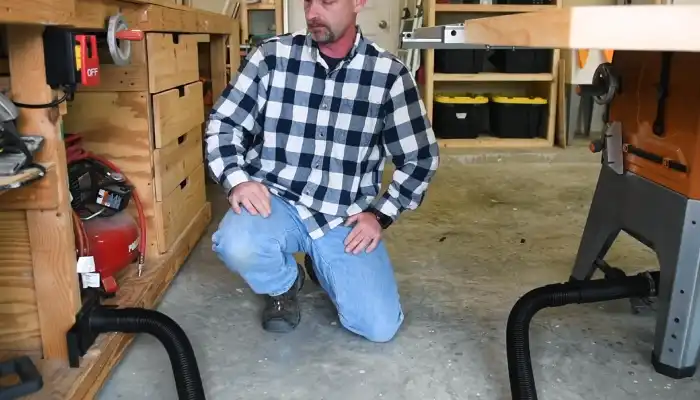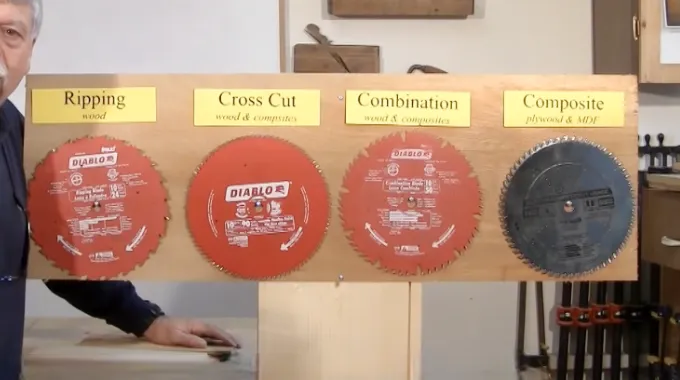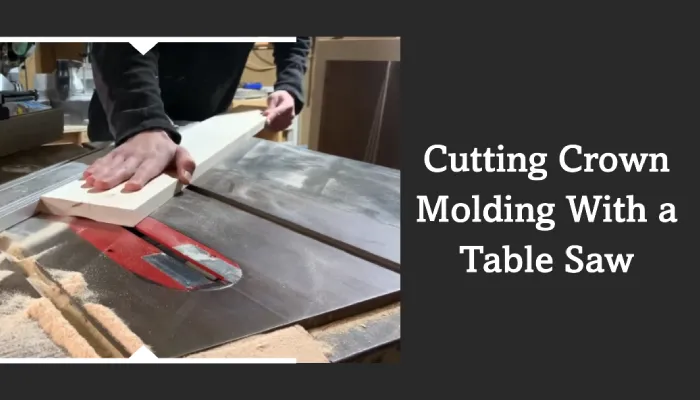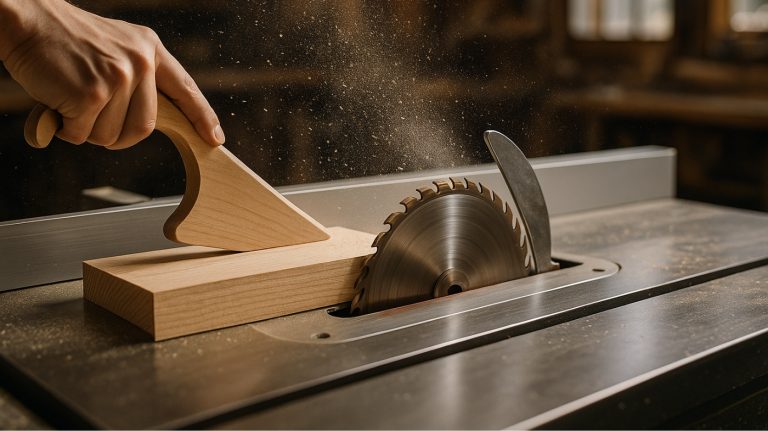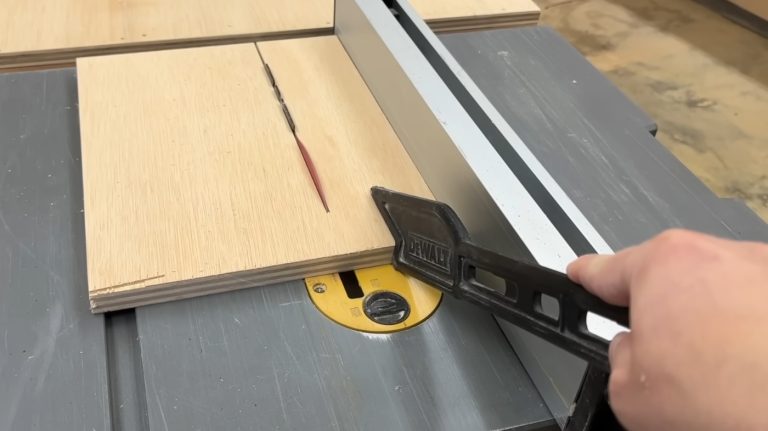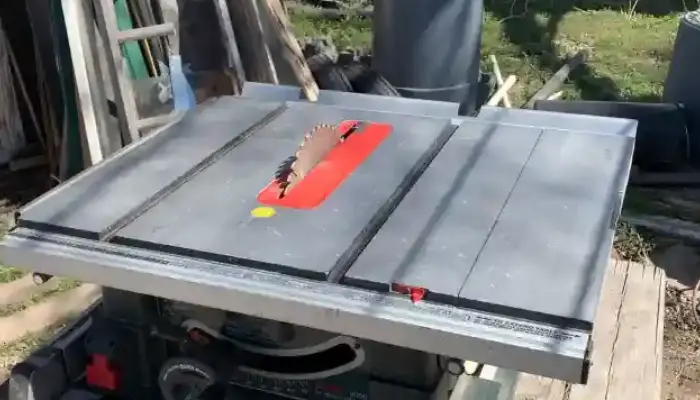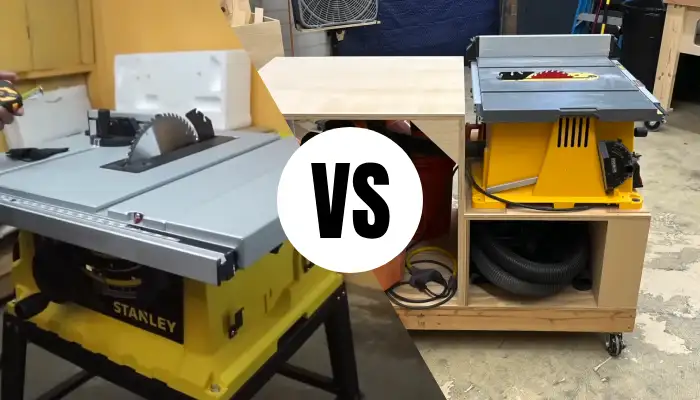How to Connect Shop Vac to Table Saw: 7 Easy Steps [DIY]
When your table saw does not have a dust collection system, a shop vac will be necessary. With a shop vac, you can easily collect dust and debris while you work, ensuring that your saw is working at its best and your workspace is hazard-free. But how to connect the shop vac to a table saw?
To connect a shop vac to the table saw, you’ll need to assess & measure the size of your dust collection port you have and which adapter to get. Then, prepare the necessary PVC fittings and adapters for installation. Then, connect the PVC fittings and adapters to your table saw and shop vac to complete the setup.
Shop vacs are excellent dust collectors. It’s portable, inexpensive, and can collect significant dust and debris. The guide will discuss correctly connecting a shop vac to a table saw, ensuring effective dust collection. So keep reading for more details.
How to Connect Shop Vac to Table Saw for dust collection? Step to Follow
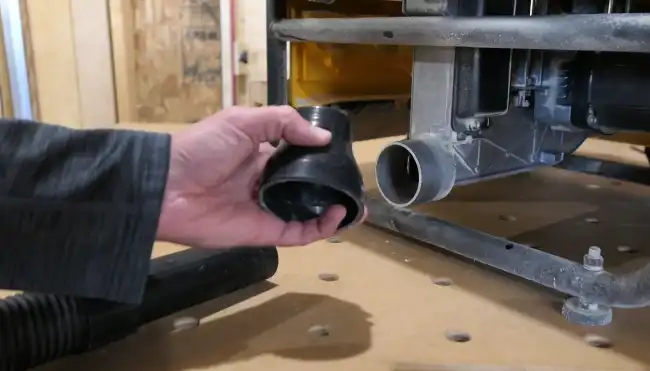
Step 1: Assess the Dust Collection Port on Your Table Saw
Step 2: Measure the Dust Collection Port and Shop Vac Hose
Step 3: Acquire the Necessary PVC Fittings and Adapters
Step 4: Prepare the PVC Fittings and Adapters
Step 5: Connect the PVC Fittings and Adapters
Step 6: Attach the Shop Vac Hose
Step 7: Test the Connection
You will need the following materials to connect a shop vac to a table saw:
Materials Needed:
- Shop vac
- Table saw with a dust collection port
- PVC pipes (various sizes)
- PVC couplings and adapters
- Hose clamps
- Screwdriver or wrench (if necessary)
- Duct tape (optional)
After collecting all these supplies and materials, you’ll need to follow a few steps:
Step 1: Assess the Dust Collection Port on Your Table Saw
Take a peek at the dust collection port on your table saw and observe its size and shape, as this will determine the appropriate PVC fittings and adapters needed to connect the shop vac hose.
The dust collection port should be located at the back of the saw blade and can come in various sizes and shapes. Most table saws have a standard size of 2.5 inches, but some may have a larger or smaller diameter.
Some of the shapes can also vary, such as circular or rectangular. So take note of these details to purchase the correct PVC fittings and adapters for your shop vac hose.
Step 2: Measure the Dust Collection Port and Shop Vac Hose
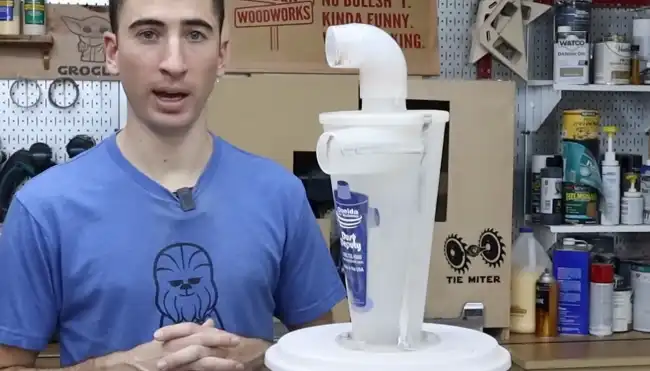
Now let’s measure the inside diameter of the dust collection port on the table saw and the outside diameter of your shop vac hose. These two dimensions are important when selecting PVC fittings for efficient dust collection.
The size of the PVC fitting you’ll need to connect your shop vac hose to your table saw’s dust collection port depends on the inside diameter of the port. Make sure you measure both dimensions to prevent leaks or inefficiencies.
Step 3: Acquire the Appropriate PVC Fittings and Adapters
After that, pick up the PVC fittings and adapters from your local plumbing supply store and select the right size based on your measurements. For the straight pipes, choose ones long enough to span the distance between the dust collection port and the shop vac hose.
Straight pipes will be connected with couplings, and PVC pipes will be connected to dust collection ports with an adapters shop vac hose. When selecting the fittings and adapters, check that they’re compatible with the materials and diameters of the pipes.
Step 4: Prepare the PVC Fittings and Adapters
Now it’s time to make those PVC fittings and adapters shine by sanding away any rough edges and ensuring they are debris-free. This step is crucial in ensuring the connections between the shop vac and table saw are secure and efficient.
Any rough edges or debris left on the fittings can cause leaks and decrease the system’s effectiveness. To prepare the fittings and adapters, use sandpaper or a file to remove rough edges or burrs. Ensure the edges are smooth to prevent air leaks and a tight fit.
Next, inspect the fittings and adapters to ensure they are free from any debris or dirt. Cleaning the fittings will prevent any blockages in the system and ensure a smooth operation.
Step 5: Connect the PVC Fittings & Adapters
You’re almost there. To connect the PVC adapters and fittings, start by placing the PVC pipes together and securing them with PVC couplings. Ensure the fit is snug and tight to prevent any leaks in the system. Use PVC cement or adhesive to secure the connections if necessary.
Create a clear pathway from the dust collection port on the table saw to the shop vac. This pathway should be free of obstacles or curves to ensure the sawdust flows smoothly through the system.
Step 6: Attach the Shop Vac Hose
Now snugly fit the hose to the PVC adapter or coupling, using a clamp to prevent sawdust from escaping. Make sure the connection is secure and airtight, as air leaks can reduce the efficiency of your dust collection system.
Once the hose is attached, turn on the shop vac and test the system to ensure it works properly. Adjust the position of the hose and the suction power of the shop vac as needed to ensure that all the sawdust and debris are collected.
[Note: Duct tape can also secure the hose to the adapter, but it’s less reliable than a hose clamp.]
Step 7: Test the Connection
Test the connection for leaks or issues after attaching the hose to the dust collection system. To do this, turn on the table saw and observe the suction of the shop vac.
If you notice any issues with the connection, adjust the position of the shop vac or the suction until it works properly. You may also need to check the hose and connections for any damage or blockages affecting its performance.
How much dust can a shop vacuum collect on a table saw?
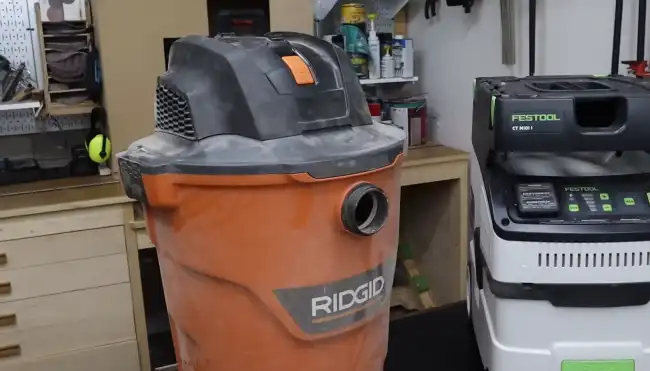
Connecting your table saw to a shop vac can collect up to 99% of the dust and debris produced during woodworking. This will improve air quality and prevent harmful particles from settling in your work area.
Breathing in fine particulate matter can cause health issues over time, making this an important consideration for those concerned about workshop safety.
The amount of dust a shop vac can handle depends on size, motor power, and collection efficiency. Even smaller vacs can handle significant dust and debris, making them an excellent choice for maintaining a clean workspace.
Can I use a shop vac without a dust bag on a table saw?
You must always use a dust collection bag with your shop vac to collect the fine dust from your table saw. Without the bag, the fine dust will go through the filter and blow back into the system, creating a mess and risking your health.
While a shop vac can be a great option for small woodworking projects, you must use it correctly to ensure the best results. Using a shop vacuum without a dust bag is not recommended for table saws.
Can I use any shop vac for dust collection on a table saw?
Not all shop vacs suit dust collection systems on a table saw. Using a shop vac with a high CFM (cubic feet per minute) rating and a HEPA filter is recommended. Therefore, choose a shop vac compatible with stationary power tools like a table saw.
Using the wrong type of vacuum for dust absorption on a table saw can lead to dangerous health risks. Tiny dust particles can easily enter your respiratory system, causing irritation, allergies, and even lung diseases.
Create a Custom Dust Collection System for a Healthy Workspace
Connecting your shop vac to your table saw for dust collection is a simple and effective way to maintain a healthy workspace. Following our step-by-step instructions, you can create a customized dust collection system that fits your needs.
Using a shop vac as a dust collection on a table saw can help prevent respiratory issues and clean your workspace. But not all shop vacs are created equal, so choosing one appropriate for your table saw and woodworking needs is essential.
You should also follow proper safety precautions when using your table saw, such as wearing a dust mask and safety glasses. By taking these steps, you can ensure a safer and healthier woodworking experience.

